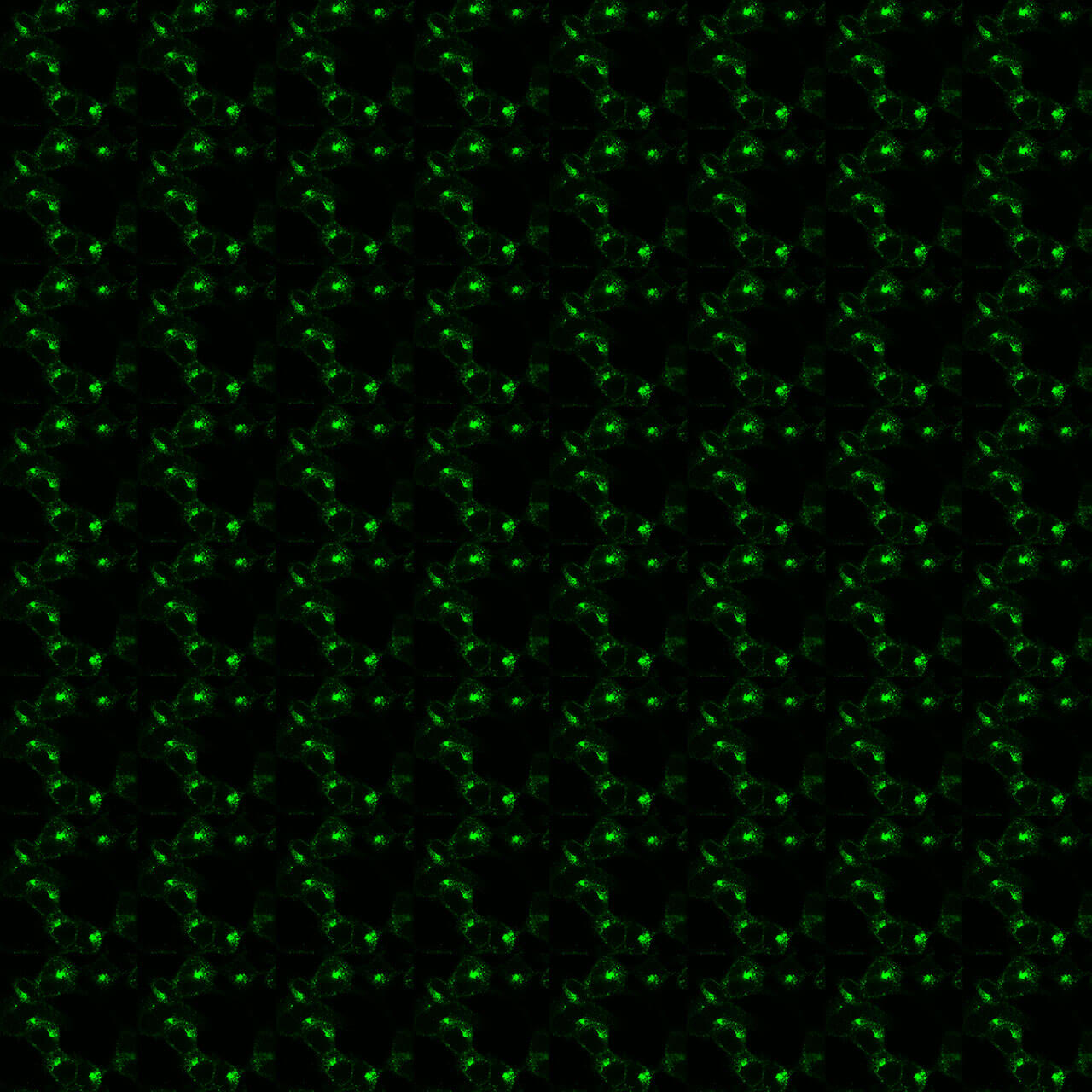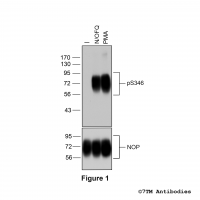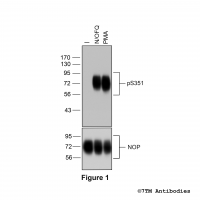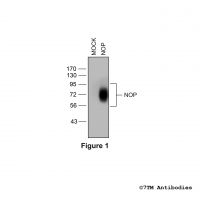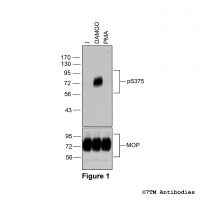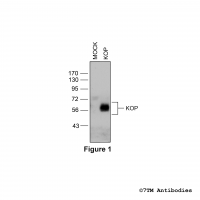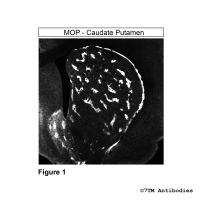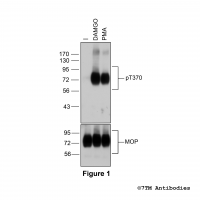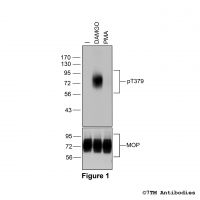Prices plus VAT plus shipping costs
Ready to ship today,
Delivery time appr. 5-8 days
- Order number: 7TM0320C
- Content: 100 µl
- Host: Rabbit
Threonine362/Serine363 (T362/S363) is a major phosphorylation site of the nociceptin/orphanin FQ peptide receptor (NFQ receptor, NOP). The pT362/pS363-NOP antibody detects phosphorylation in response to agonists but not after PKC activation. T362/S363 phosphorylation is a key regulator of NOP desensitization, β-arrestin recruitment and internalization. The pT362/pS363-NOP antibody can detect phosphorylated MOP in mouse brain in vivo.
| Alternative Names | NOP, OPRL1, Nociceptin/Orphanin FQ Receptor |
| IUPHAR Target ID | 320 |
| UniProt ID | P41146 (human) P35377 (mouse) P35370 (rat) |
| Western Blot (WB) | 1:1000 |
| Species Reactivity | Human, Mouse, Rat |
| Host / Isotype | Rabbit / IgG |
| Class | Polyclonal |
| Immunogen | A synthetic phosphopeptide derived from human NOP around the phosphorylation site of Thr362/Ser363 |
| Form | Liquid |
| Purification | Antigen affinity chromatography |
| Storage buffer | Dulbecco's PBS, pH 7.4, with 150 mM NaCl, 0.02% sodium azide |
| Storage conditions | short-term 4°C, long-term -20°C |
Figure 1. Agonist-induced Threonine362/Serine363 phosphorylation of the Nociceptin/Orphanin FQ Receptor. Upper panel, HEK293 cells stably expressing the Nociceptin/Orphanin FQ receptor (NOP) were either not exposed or exposed to 10 μM Nociceptin/Orphanin FQ or 0.1 μM PMA (Phorbol 12-Myristate 13-Acetate) for 30 minutes. Cells were lysed and immunoblotted with the anti-pT362/pS363-NOP antibody (7TM0320C) at a dilution of 1:1000. Lower panel, blot was stripped and reprobed with the phosphorylation-independent anti-NOP antibody (7TM0320N-WB) at a dilution of 1:1000 to confirm equal loading of the gel.
Figure 2. Analysis of dose-dependent Nociceptin/Orphanin FQ Receptor phosphorylation using a panel of phosphosite-specific antibodies. Upper three panels, HEK293 cells stably expressing the Nociceptin/Orphanin FQ Receptor (NOP) were either not exposed or exposed to increasing concentrations of Nociceptin/Orphanin FQ ranging from 1 nM to 10 μM for 30 minutes. Cells were lysed and immunoblotted with the anti-pS346-NOP antibody (7TM0320A) or anti-pS351-NOP antibody (7TM0320B) or anti-pT362/pS363-NOP antibody (7TM0320C) at a dilution of 1:1000. Lower panel, blot was stripped and reprobed with the phosphorylation-independent anti-NOP antibody (7TM0320N-WB) at a dilution of 1:1000 to confirm equal loading of the gel.
Figure 3. Analysis of dose-dependent Nociceptin/Orphanin FQ Receptor phosphorylation in vivo in NOP-eGFP knock-in mice using two phosphosite-specific antibodies. Upper two panels, NOP-eGFP knock-in mice stably expressing the Nociceptin/Orphanin FQ Receptor tagged with enhanced green fluorescent protein (NOP-eGFP) were intraperitoneal injected with 0.9% NaCl or increasing concentrations of specific Nociceptin/Orphanin FQ receptor agonist AT-202 ranging from 0.3 to 30 mg/kg for 30 minutes. Mice were euthanized and brains were removed. The NOP-eGFP receptor was immunoprecipitated with anti-GFP protein agarose beads and immunoblotted with the anti-pS351-NOP antibody (7TM0320B) or anti-pT362/pS363-NOP antibody (7TM0320C) at a dilution of 1:1000. Lower panel, blot was stripped and reprobed with the phosphorylation-independent anti-NOP antibody (7TM0320N-WB) at a dilution of 1:1000 to confirm equal loading of the gel.
Dasgupta P, Mann A, Polgar WE, Reinscheid RK, Zaveri NT, Schulz S. Attenuated G protein signaling and minimal receptor phosphorylation as a biochemical signature of low side-effect opioid analgesics. Sci Rep. 2022 May 3;12(1):7154. doi: 10.1038/s41598-022-11189-6. PMID: 35504962; PMCID: PMC9065038.

